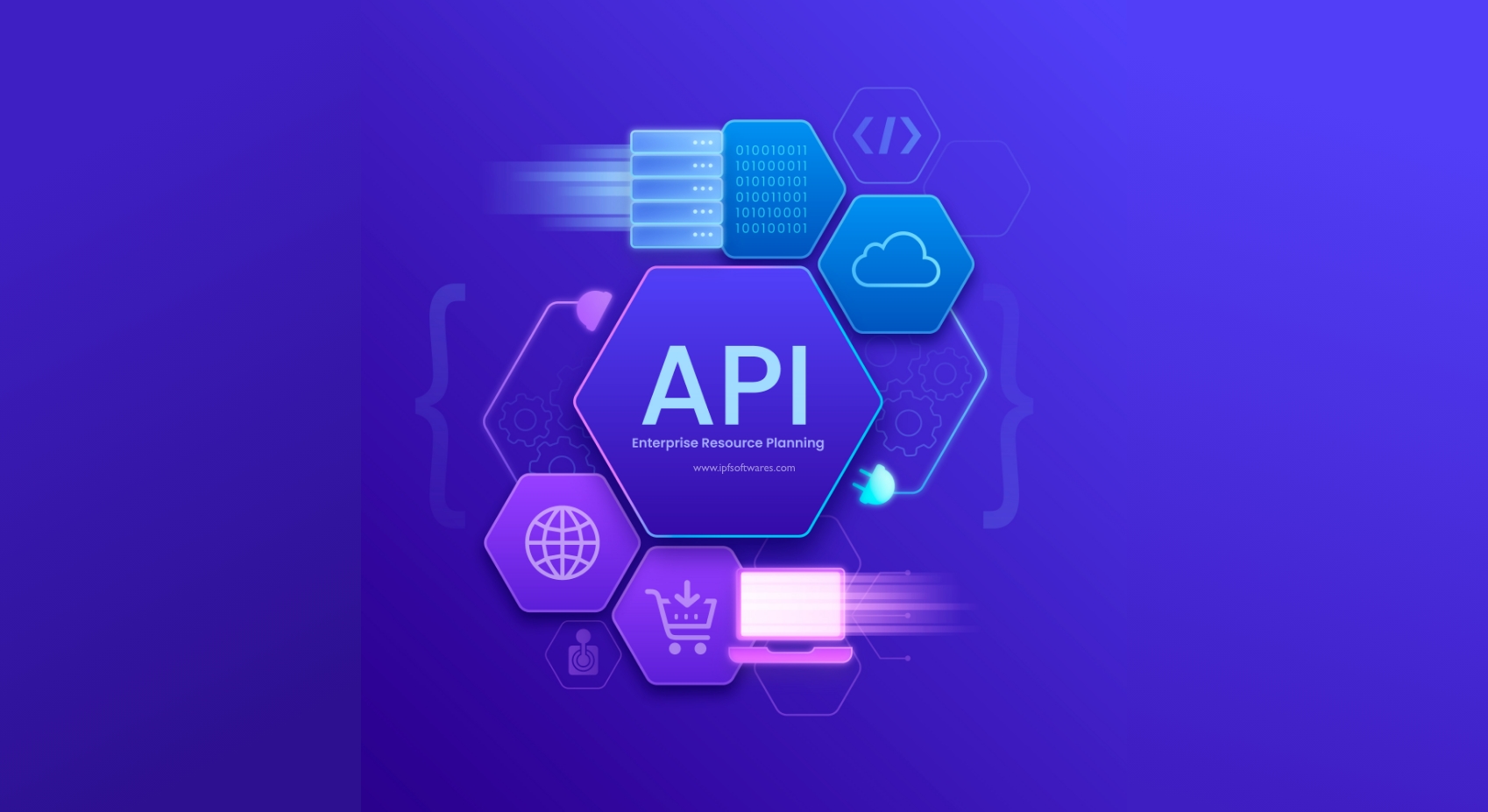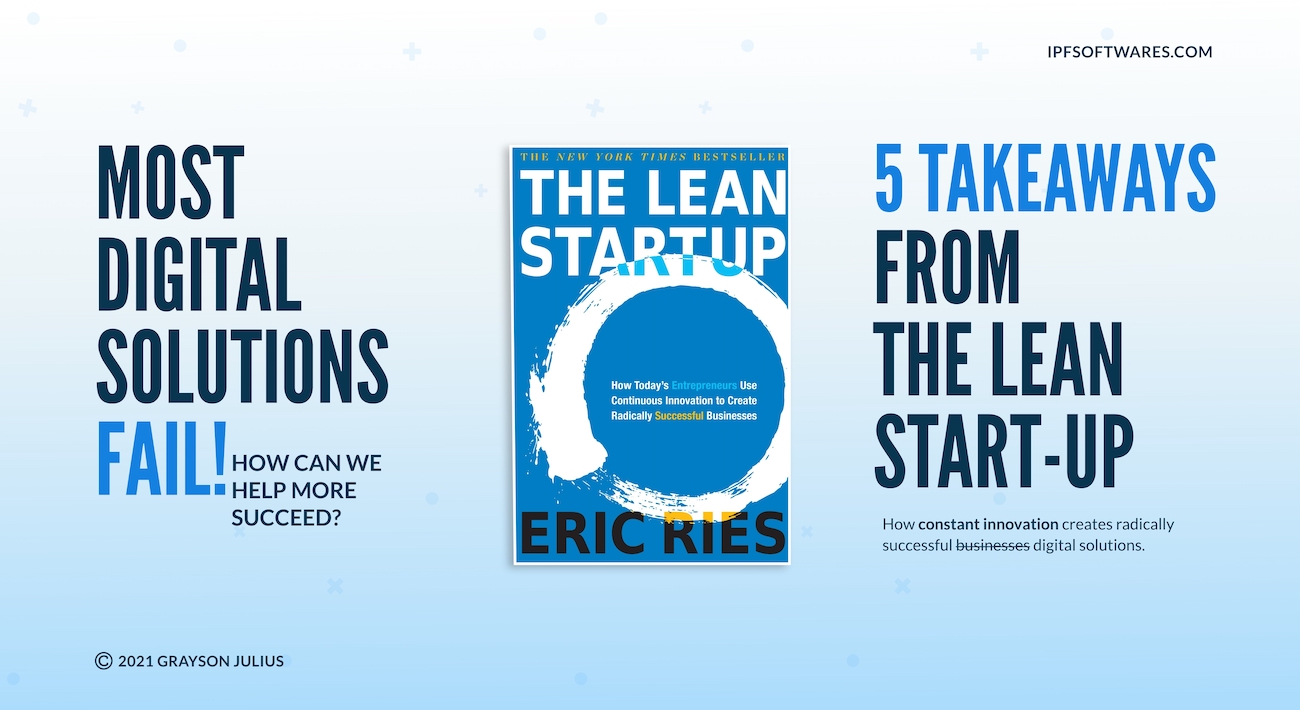At iPF Softwares, we often come across clients who are not quite sure how the various components of a software system interact to create a digital solution.
That's why we decided to create this article - to provide a clear and easy-to-understand explanation of the design and operation of a software system.
Our team of experts have worked with a wide range of clients, and have seen firsthand the confusion and frustration that can arise when people don't fully understand how a software product works. We want to change that.
Through this article, we aim to demystify the inner workings of digital solutions, breaking down the complex interactions between software components in simple language that anyone can understand.
Whether you're a non-technical founder, innovator, or simply someone curious about how software products function, this guide will give you the knowledge and understanding you need to make informed decisions about your software needs.
So, if you've ever wondered how a software system is designed and how the different components work together to provide a digital solution, read on.
We've got you covered.
By the end of this article, you will have a good understanding the Interactions Between Digital Solution Components.
What is Software System Architecture?
Software system architecture is the foundation of any digital solution.
Software system architecture is the design of a system that manages and processes data to provide a digital solution.
It serves as a blueprint for the way data is arranged, kept, and used by a system.
Better performance, scalability, security, and maintainability are just a few advantages that a well-designed architecture can offer.
Additionally, it aids in guaranteeing that the system is capable of handling both growing user demands and business demands.
In a digital solution, information is typically moved between different components, such as a mobile app, API, database, and CMS (Content Management System).
What are components of Software System Architecture?
Depending on the requirements of your digital solution, components that make your digital solution can differ from one solution to another.
Components of system architecture work together to provide a digital solution and enable smooth flow of data between front-end and back-end.
Each component plays a unique role in the overall system architecture.
The components of a software system architecture include:
- API (Application Programming Interface): An API is the middleware layer in your system architecture or in simple words “ the bridge “ that enables communication and data transfer between front-end (mobile app or web) and back-end (database and CMS). It receives requests from the front-end, processes them, and sends back data.
- Mobile or Web App: Mobile or Web application is the front-end user interface that users interact with on their mobile devices or computer browser. It sends requests to the API and receives data in response.
- CMS (Content Management System): The CMS is a tool that allows users to manage and publish content on the website or app. It communicates with the database to store and retrieve the content.
- Database: The database is the back-end component that stores and manages the data. It can be a relational database, such as MySQL, or a non-relational database, such as MongoDB. It receives requests from the API and returns the data.
6 Types of software system architecture and their advantages
When it comes to building software systems, there are a variety of different architectural approaches that can be taken.
Each approach has its own set of pros and cons, and the right choice will depend on the specific needs of your project.
In this article, we'll take a look at six different types of software architecture: monolithic, microservices, client-server, n-tier, service-oriented (SOA), and event-driven.
Monolithic Architecture
First, let's take a look at the monolithic architecture. This approach is characterized by tightly coupled components that are all built as a single unit.
The entire system is deployed and executed as a single process, and any changes to the system require rebuilding and redeploying the entire application.
While this approach can be simpler to implement, it can also make it more difficult to make changes or scale the system.
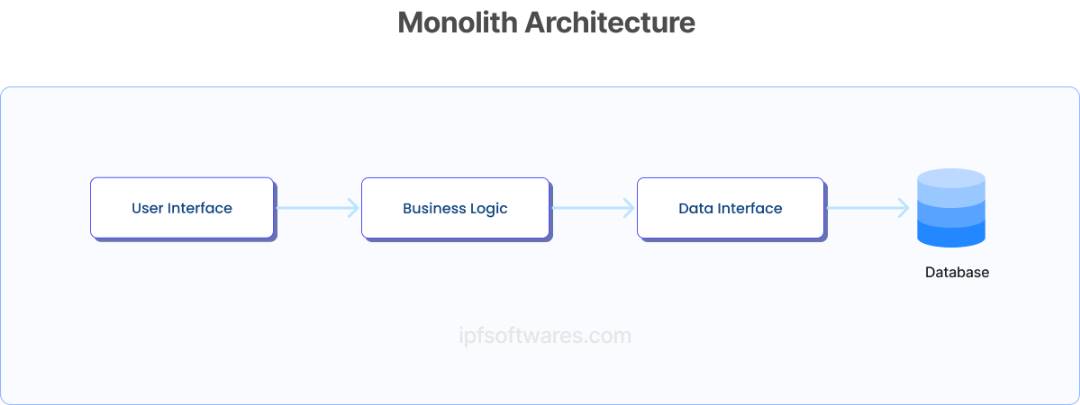 Monolithic Architecture | Image By iPF Softwares
Monolithic Architecture | Image By iPF SoftwaresMicroservices Architecture
Next, we have microservices architecture.
This approach involves breaking the system down into a collection of independent, self-contained services.
Each service has its own specific function and communicates with other services through APIs. This allows for greater flexibility and scalability, as individual services can be updated and deployed independently.
However, managing a large number of services can be complex and challenging.
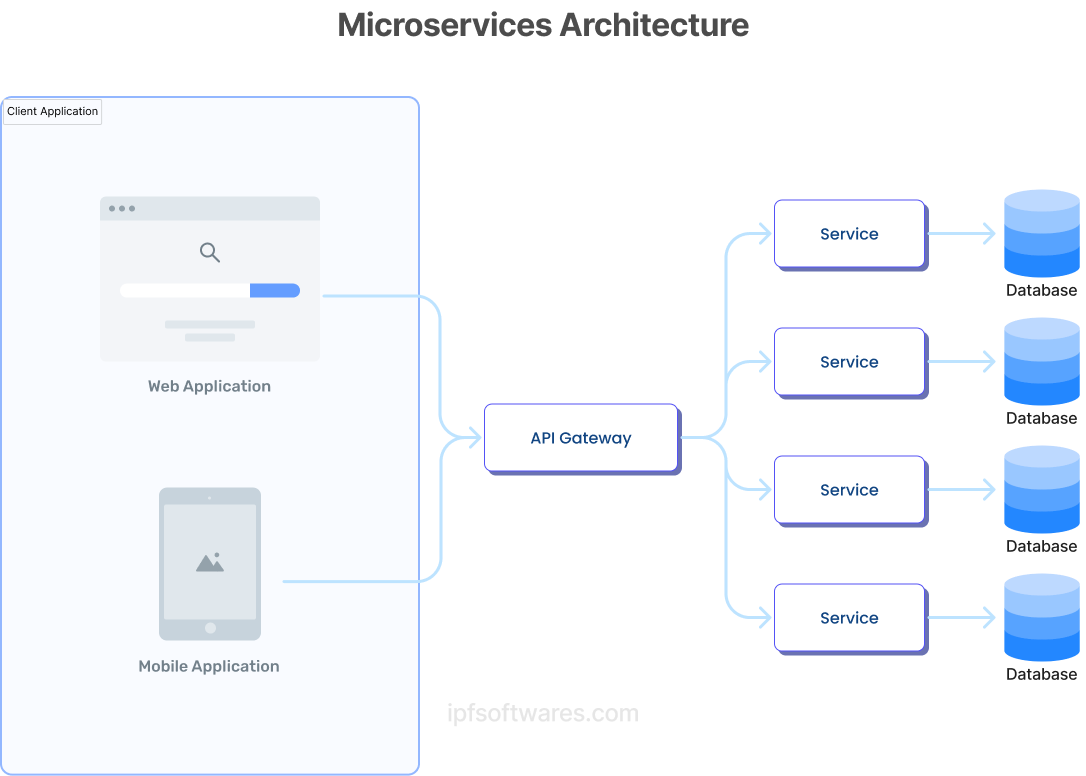 Microservices Architecture | Image By iPF Softwares
Microservices Architecture | Image By iPF SoftwaresClient-server Architecture
Client-server architecture is another popular approach.
In this type of architecture, the system is divided into two main components: the client and the server.
The client is the front-end user interface, and the server is the back-end that stores and manages the data.
The client sends requests to the server, which processes the requests and sends back the data.
This approach is well-suited for systems that need to support a large number of users.
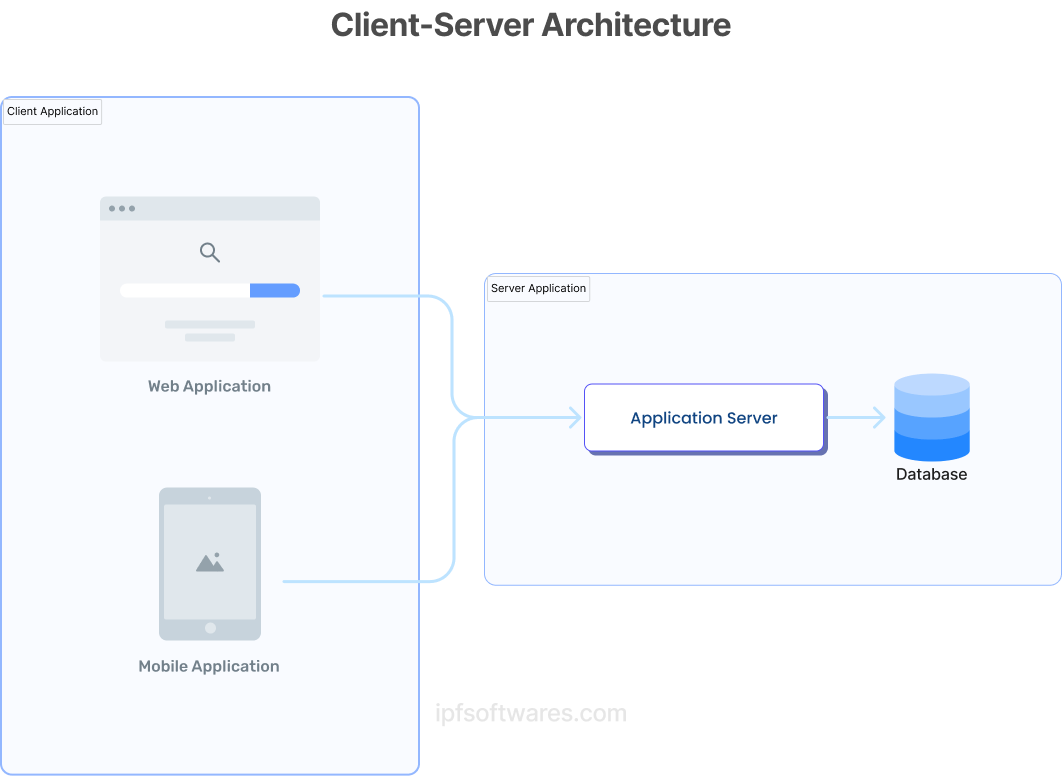 Client-server Architecture | Image by iPF Softwares
Client-server Architecture | Image by iPF SoftwaresN-Tier Architecture
Another common approach is N-tier architecture.
In this type of architecture, the system is divided into multiple layers or tiers. Each layer has a specific function, such as presentation, application, and data.
This allows for better separation of concerns and easier maintainability. However, it can also make the system more complex and harder to understand.
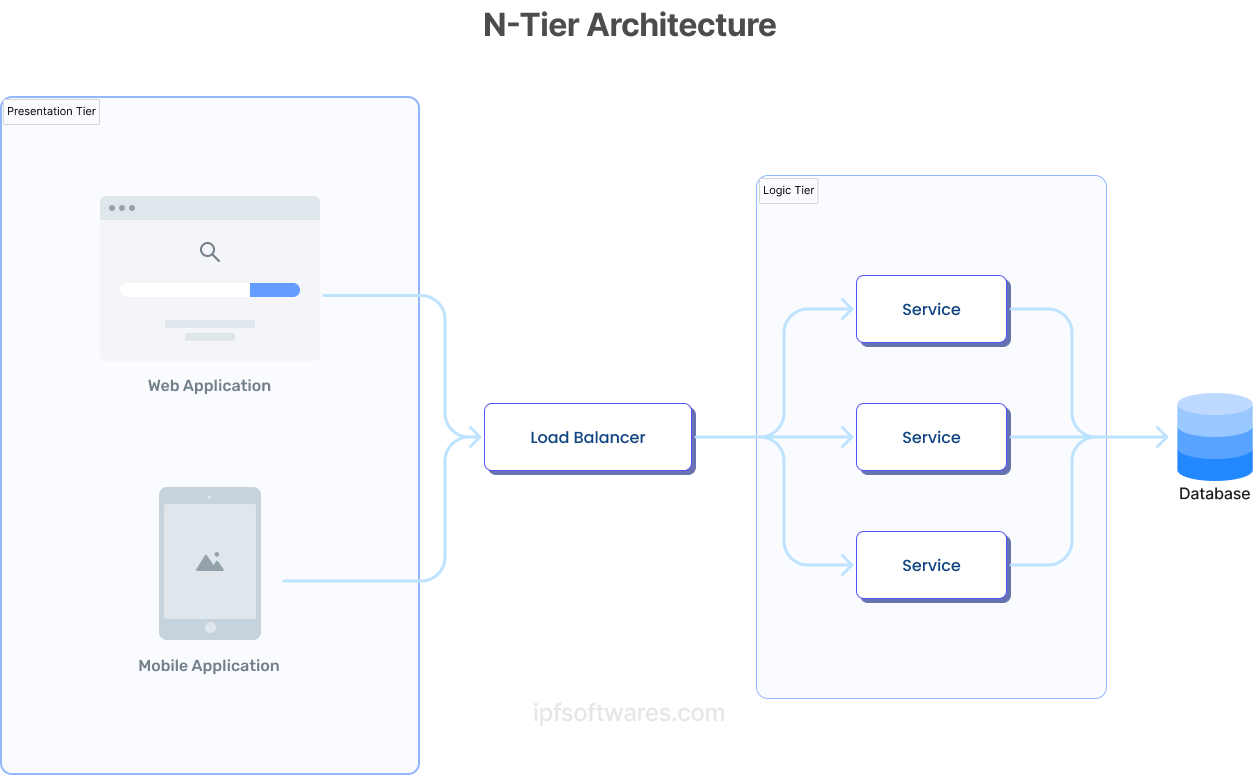 N-Tier Architecture | | Image by iPF Softwares
N-Tier Architecture | | Image by iPF SoftwaresService-oriented architecture (SOA)
Service-oriented architecture (SOA) is a more recent approach that involves creating a collection of independent services that communicate with each other through APIs.
The services are reusable, modular, and loosely coupled, allowing for greater flexibility and scalability.
However, managing and coordinating the interactions between multiple services can be challenging.
 (1).png) Service-oriented architecture (SOA) | Image By iPF Softwares
Service-oriented architecture (SOA) | Image By iPF Softwares Event-Driven Architecture
Finally, we have event-driven architecture.
This approach is designed to respond to events or triggers from external sources.
The system is composed of components that listen for events and trigger actions in response.
This allows for real-time processing and asynchronous communication between components. However, managing a large number of events and triggers can be complex and difficult.
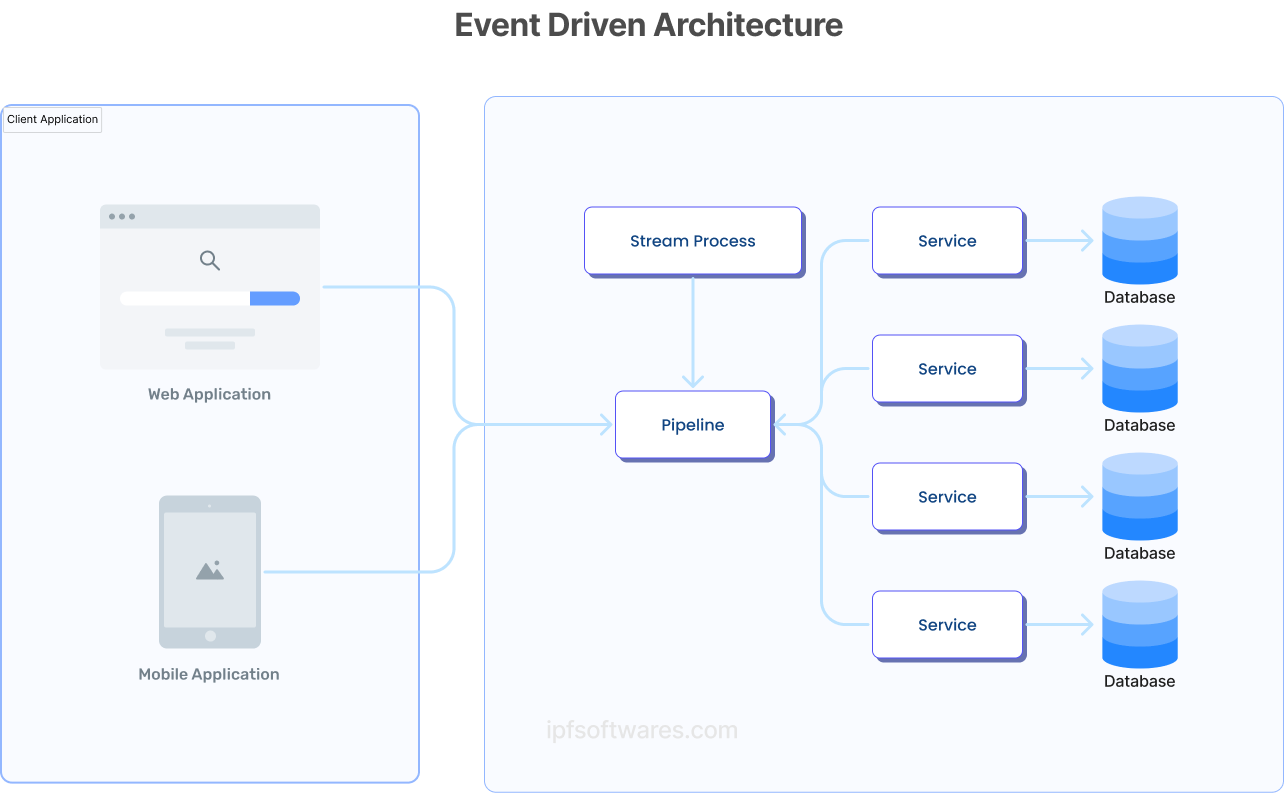 Event-driven Architecture | Image By iPF Softwares
Event-driven Architecture | Image By iPF Softwares6 Key Factors to Consider When Choosing a System Architecture for Your Digital Solution
When it comes to building a digital solution, there are a few key things to keep in mind. The first step is to really understand the requirements of the system.
- What kind of traffic are you expecting?
- How much data do you need to store and process?
- What are your security needs?
- And what kind of performance are you looking for?
Once you have a clear understanding of these requirements, you can start to figure out what kind of architecture will be the best fit.
- One of the most important things to consider is scalability. You want to make sure that your system can handle increased traffic and data storage without bogging down or crashing. This is especially important if you're building something that's going to grow over time. Nobody wants to be stuck with a system that can't keep up with their needs.
- Another key consideration is maintainability. You want to make sure that your system is easy to update and make changes to, without causing any disruption or downtime. This is crucial for ensuring that your system stays up-to-date and continues to work well over time.
- Security is also a big concern. You want to make sure that your system is protected from unauthorized access and attacks. This is essential for keeping your data safe and secure.
- Of course, performance is also important. You want to make sure that your system can handle the expected workload and respond to user requests in a timely manner. This is essential for providing a good user experience.
- Last but not least, cost is also a factor to consider. You want to make sure that you're getting good value for your money, and that your system is affordable and can provide a good return on investment.
- Overall, there are a lot of different factors to consider when building a digital solution. By keeping these things in mind, you can make sure that your system is well-designed, scalable, maintainable, secure, performant and cost-effective.
Do you need help for selecting the best software architecture for your solution, talk to an expert - Contact Us
Why Microservice Architecture is the popular choice for developing digital solutions
At iPF Softwares, we have a passion for creating innovative and effective digital solutions for impact-oriented companies and initiatives in Africa.
Over the years, we've had the opportunity to work on a wide range of projects, and one architectural approach that we've found to be particularly effective is microservices architecture.
Microservices architecture is a popular choice for many of the digital solutions we've developed because it offers a high level of flexibility and scalability.
By breaking a system down into a collection of independent, self-contained services, each with its own specific function, we're able to make updates and changes to individual services without affecting the entire system.
This allows us to make continuous improvements to our solutions without disrupting our clients' operations.
We've been using microservices architecture since 2015, and we've seen firsthand how effective it can be for building robust, scalable, and flexible digital solutions. In fact, a huge percentage of the software solutions we've developed over the years have been built using this approach.
One of the biggest advantages of microservices architecture is that it allows for greater scalability.
As a business grows and its needs change, it can be challenging to scale a monolithic system to meet those needs.
With microservices, however, each service can be scaled independently, making it much easier to adapt to changing requirements.
Another advantage is that it allows for a high degree of flexibility. Each service can be developed, deployed, and updated independently, which makes it much easier to make changes and improvements to the system over time.
Finally, microservices architecture also makes it easier to maintain and evolve the system over time. Because each service is self-contained, it's easier to understand and troubleshoot any issues that arise.
In conclusion, at iPF Softwares, we favor microservices architecture for building digital solutions because it provides a high level of flexibility, scalability, and maintainability. This is why we have developed over 50 unique software solutions using this approach since 2015.
One Size Does Not Fit All
There is no "best" software system architecture, as the best architecture depends on the specific requirements, constraints, and goals of the digital solution.
Some architectures may be better suited for certain types of solutions, while others may be better for different types of solutions.
For example, a monolithic architecture may be suitable for a small, simple system that does not require a high level of scalability or flexibility.
A microservices architecture may be better for a large, complex system that needs to be scalable and flexible.
A client-server architecture may be suitable for a system that needs to handle a high volume of requests and respond quickly to user requests.
Therefore, it is important to carefully evaluate the requirements and goals of the digital solution and choose an architecture that is the best fit for the specific context.
This may involve a combination of different architectures, depending on the specific needs of the system.
Bottom Line
If you're looking for help with choosing and implementing a system architecture for your digital solution, look no further.
Our team of DevOps experts and system architects at iPF Softwares have over 10 years of combined experience in structuring and implementing different types of system architectures.
Whether you need assistance with understanding the different types of architecture, evaluating the requirements of your solution, or implementing the chosen architecture, our team has the expertise to guide you every step of the way.
We have successfully implemented various types of architecture for a wide range of digital solutions, and we can provide the insights and guidance you need to make the right decision for your system.
Contact us today to talk to one of our experts and get the help you need to choose and implement the right system architecture for your digital solution.
